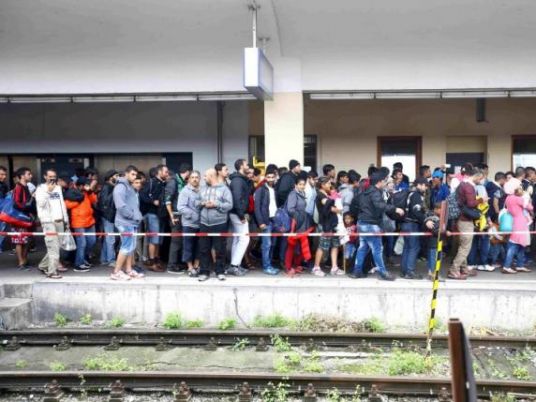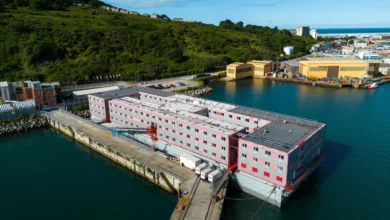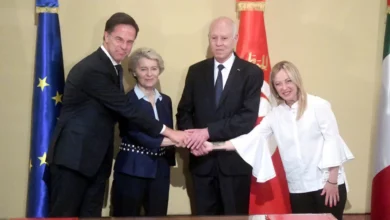
Europe's ageing economy may just find that the biggest refugee crisis since World War Two gives it a new lease of life – even if huge uncertainty about the future scale of immigration and how refugees are integrated cloud any long-range forecasting.
With winter approaching, the dramatic flow into Europe this year of people fleeing poverty and war in the Middle East and Africa slowed only marginally in September.
Some 170,000 'irregular migrants' entered the European Union last month, according to the bloc's border agency Frontex, taking the total for the year so far to 710,000.
That's already almost three times the number for all of 2014 and is widely forecast to top 1 million by year-end.
Some private estimates are for net immigration into the 19-nation eurozone this year of as many as 1.6 million people.
For months, stories of human tragedy and endeavor have jostled with tales of chaos and confusion on Europe's land and sea borders. In the process, the institutional shortcomings of the European Union were exposed as it struggled to decide how many to take in and where to register and settle them.
Germany committed to taking 800,000 asylum seekers on its own. The EU plans to distribute 120,000 across its 28 members.
But as the weeks and headlines have passed, economists too have been forced to make assessments of what this migrant shock could mean for such a relatively rich economy, but one that has been staring at years of ebbing birth rates, workforces and achievable economic growth rates.
Although laced with caveats, most forecasters quickly flag up the positive impact migrants may have on waning working age populations and evaporating 'potential growth' rates – defined as the sustainable pace possible without stoking inflation.
Estimates of euro potential growth had slumped alarmingly below 1 percent since the financial crash seven years ago, with a legacy of debt and dour demographics meaning few saw an upturn without surging immigration or higher retirement ages.
Just who is rescuing whom in this crisis becomes a moot point.
Swiss bank Credit Suisse said it's now working off estimates that over the next five years net immigration will boost the euro area's population by about 5 million, equivalent to 1.5 percent of the current 340 million.
And assuming public spending to provide for those granted asylum has a one-for-one 'multiplier' on gross domestic product, it reckoned that adds 0.2-0.3 percentage points to euro growth next year.
More durably, euro 'potential output' growth will be lifted by 0.2 points above official assumptions to 1.3 percent on average over the eight years through 2023, the Credit Suisse report added, with growth this year alone exceeding European Commission forecasts by up to half a percentage point.
"The positive effects are likely to be front-loaded given the needs for housing and the fact that the marginal propensity to consume for people who arrive with almost nothing is roughly one," it said. But "economic growth should continue to benefit in coming years as young migrants start to become integrated into the labour market."
HSBC economists arrived at a similar 0.2 percent boost to potential growth. "Potential GDP by 2025 could be 300 billion euros higher than it would have otherwise been," they wrote.
Calculations based on average expenditure on each migrant of some 12,000 euros per year indicate that extra German federal, state and local government spending alone could be as much as 10-12 billion euros in 2016 – or 0.3-0.4 percent of German GDP.
Deutsche Bank lifted its 2016 German growth forecast to 1.9 percent from 1.7 percent, citing the immigration surge that it said would add about half a percentage point to overall consumption growth.
Running to standstill
But is this economic shot really transformative in a world of multi-decade demographic problems?
"Migration has been the biggest engine of demographic growth in the EU as a whole since the mid-1990s," said the Organization for Economic Cooperation and Development's migration report. "It is about to become the only one."
To keep it in context, Germany needs about 700,000 in net immigration over the next 10 years to keep its population stable, HSBC said, citing United Nations data. Its pledge on new arrivals will just stop its workforce falling for one year.
"For all the fuss about immigration, there is simply too little of it to show any significant global economic impact at all on (longer-term) demographic changes," said a paper by US bank Morgan Stanley last month.
But that's based on migration to date. Future migrant numbers are potentially massive, even if imponderables such as Syria's conflict or the willingness and ability of EU countries to keep borders open make it impossible to forecast.
Frontex estimates over 4 million Syrian, Afghan, Iraqi and Pakistani citizens remain in 'temporary protection' in Turkey, Lebanon, Jordan and Egypt.
Britain's Ministry of Defense cites studies saying 60 million people from sub-Saharan Africa may move from 'desertified' areas to north Africa and Europe by 2020.
Even if they do arrive unfettered, however, the skill sets they bring and future training available may make all the difference to host economies. The eurozone has a shortage of workers, but it already has a big surplus of unskilled labor.
HSBC said headline Commission estimates of a 7.5 million excess of new jobs being created over the next 10 years mask a 23 million excess of low-skilled workers over that time – heavily concentrated in France and Italy – and a 32 million shortage of medium and high-skilled employees.




